#turkish empire
Explore tagged Tumblr posts
Text

MacRitchie, D., Goeje, M. J. de (Michael Jan)., Snijders, J. (1886). Accounts of the Gypsies of India. London: K. Paul, Trench & co.
0 notes
Text

Ushak carpet, manufactured in the western Turkish city of Ushak (Uşak) in the first half of the 17th century. This carpet features the so-called "Lotto pattern," originating in Central Asia and named after the Venetian painter Lorenzo Lotto, who frequently depicted such carpets in his paintings. Now in the Cleveland Museum of Art, Cleveland, OH, USA. Photo credit: Cleveland Museum of Art.
#art#art history#textiles#textile art#carpet#Islamic art#Ottoman#Ottoman Empire#Ottoman art#Turkish art#17th century#17th century art#Cleveland Museum of Art
98 notes
·
View notes
Text

Yataghan sword. Ottoman Empire. 1800s to 1900s CE.
Benaki Museum, Athens.
#benaki museum#ottoman empire#ottoman#turkey#turkiye#art#culture#history#military history#Yataghan#sword#swords#modern history#middle eastern history#turkic#turkish history
79 notes
·
View notes
Text
A student geology trip to Turkey and Turkish epithermal deposits/mines is being organized and I'm throwing myself at the walls. Wrote my application letter in fifteen minutes flat with the best explanation of my archaeomet interests I have on paper. The application isn't open for another two weeks. Begging them to let me in. Please please please please let me in. Please let me in. I'll be so normal about alunite alteration in Turkish epithermals. Promise promise promise. I want to go so bad. I want to study the Lydian Empire the Lydian Empire almost certainly used mercury. They were so normal about copper. I promise I'll be normal about copper. Please please please let me come.
#I WOULD HAVE TO MISS THE FIRST WEEK OF TEACHING CLASS FOR THIS BUT IT WOULD BE SO WORTH IT PLEASE PLEASE PLEASE#THE KIDS CAN WAIT. I WILL RECORD LECTURES OR SOMETHING ILL MAKE IT HAPPEN PLEASE PLEASE PLEASE.#ptxt#AHHHHHHHHH I HAVE TO WAIT TWO WEEKS FOR IT TO OPEN?????#Honestly this is a good thing because my letter to apply probably sounds DERANGED right now so this gives me time to rewrite it.#AHHH TURKISH EPITHERMAL SYSTEMS AND THE LYDIAN EMPIRE ARCHAEOLOGY-
48 notes
·
View notes
Text
Letter sent by Greek general Georgios Karaiskakis to Ottoman sultan Reşid Mehmed Pasha

To Reşid Mehmed Pasha, Kütahı in Athens
Fuck your faith and your Muhammed
What do you think you’re doing cuckholds….Don’t have no shame asking us to negotiate with a kodja shit sultan.
Mehmedite?
Let me shit on him, and your vizer, and that Jew Silihtar Boda, that bitch
If I live, I will fuck them, and if I die, they will fart on my dick.
The General
Georgios Karaiskakis
20 April 1827
#what did bro do#greek posts#greek tumblr#greek quotes#greek history#ottoman#ottoman empire#history#greece#turkey#turkiye#turkish#balkan#1800s#historical#artifact#hellenic#turkic#war
66 notes
·
View notes
Text
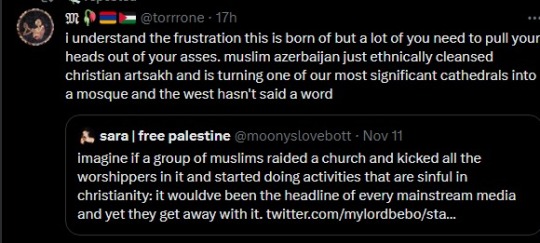
it is imp to remember that this is not about religion and the ethnic cleansing of artsakh proves this. all oppressive regimes are connected regardless of religion and that is why azerbaijan and israel have good relations. another example is saudi arabia having good relations with america and israel while also killing other muslims in yemen.
interestingly, like israel, saudi also uses religion to gain credibility (recently got holy mosque imam to give statement condemning boycotts and encouraging muslims to not be involved in the situation in palestine) and recruit muslim supporters from all over the world, while simultaneously killing/imprisoning muslim critics of the kingdom.
similarly, israel sells itself as a safe haven for jews and convinces jews around the world to migrate to israel while also simultaneously criminalizing antizionist jews all over the world, even suggesting that theyre not 'real jews' (reminiscent of takfirism which is a core part of saudi wahabi ideology) [ fun fact: the house of saud came into power in arabia with help from the british, just like the zionists in palestine! ]
oppressive regimes are directly connected and mirror each other in several ways. this is why liberation and resistance movements need to unite and work together across the world
#as long as u sell ur soul for capitalist profits and empire you will get the support of other colonialist and imperialist countries#regardless of religion#this is also a ksa hate acc btw lol fuck the saudis they should be deposed asap#there is no place for a king in any muslim state#the saudi kingdom has been illegitimate from the very beginning#free palestine#palestine#artsakh#armenian genocide is another example of a musslim ottoman empire committing a enocide against a christian minority#another thing that proves that religion doesnt matter in oppression: the muslim turkish state's treatement of the muslim kurdish minority#look it up!!!#and since all oppressive regimes r connected in one way or another - turkey also has relations with israel#gaza#death to israel#death to america#free kurdistan#uyghurs#kurds#armenians#free kashmir#india's treatment of kashmir and link that to india's support for israel#china may be somewhat opposed to israel or america but that does not absolve china's ethnic cleansing of uyghurs#east turkistan#east turkistan independence day is today btw!!
368 notes
·
View notes
Note
Hey, question: what are your thoughts on baklava? Is it turkish or greek?
It's not a matter of opinion, it's a matter of facts and the lack of them. The answer to this is normally an one-liner but I would like to give some context because there are foreign people out there who don't understand these feuds.
The one-liner is that the origins of the baklava are unknown.
Now the context: It is funny that what you will constantly hear is the "turkish vs greek" discourse when in actuality baklava is a traditional pastry in at least a dozen more countries in the Balkans, the Middle East and South Caucasus. The reason the discourse always zooms in in these two countries is because of their historically tense relations, which makes nationalists from these places channel their frustrations even in the pettiest of topics. Another reason is that this is a region which has nurtured numerous multi-ethnic empires but Turkey and Greece are the countries which are typically the most connected to these imperial pasts.
We do not know who the cook who came up with the baklava in the Ottoman empire was or to which of the various ethnic communities of the empire they belonged. We know for a fact that baklava's name is Turkish because this was the official language of the empire. Some turkish nationalists treat the turkish name as proof but this is not a good enough reasoning in an imperial context because everything is almost always popularised via the first language of an empire. With the same reasoning, we could say that since the basis of the baklava is the phyllo (filo) dough which is a Greek word, then baklava is a turkish sweet that is half-Greek because it has a Greek basis? These things are unserious.
We also do not know whether that first cook in the Ottoman Empire created the pastry out of thin air or was heavily inspired or was copying a pastry that was already a known delicacy in these regions before the establishment of the Ottoman Empire. Actually, we know that there was a suspiciously way too similar pastry in the Byzantine Empire, named "koptoplakýs¨, a Greek name corresponding to the official language of the Byzantine Empire. We still don´t know if koptoplakys was purely a Greek recipe or it was first made by one of the other Byzantine ethnic groups or it was also inspired by something else prior to it. Several speculations place the origins of baklava and that of koptoplakys to a variety of regions, such as Ancient Greece, Armenia, the Assyrian Empire and more.
The point is that since all these regions of the Balkans, Anatolia and the Middle East were parts of empires, various ethnicities cohabitating in the same place, in the same ecosystem with the same produce, even if this coexistence was not exactly dreamy, it is natural that all these people pretty much ate similar or the same foods and such foods with "controversial" origins are genuinely part of their culinary heritage. There's no "stealing" when it comes to regular everyday things massively consumed by people living together. It's a pastry. It's not some sacred, religious or national symbol. It's a pastry, traditional and with historical presence throughout most of the Eastern Mediterranean.
Like Farya Faraji correctly says, if anything, the differences were regional and not national, since nation states are a very recent development in world history. Meaning, all these countries make the baklava but you may notice slight differentiations in each country / region's version. The standard Turkish baklava is made with pistachios. The standard Greek baklava is made with walnuts. A baklava I had in Montenegro had a lot of lemon zest in it, which definitely is not a thing in Greece. Spices can vary too.
Also, sometimes there is so much discourse about dishes with the same name when in fact the dishes are not even the same. For example, turkish and greek moussakas, another huge discourse, are literally two different dishes!
Turkish mussaka:
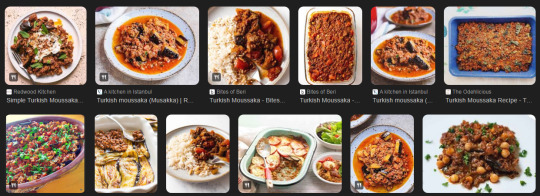
Greek mussaka:
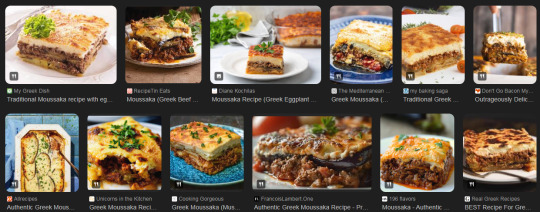
(Needless to say various types of mussakas are present throughout the aforementioned regions as well, again.)
"Yes but the similarities" the similarities can be found in literally all neighbouring regions in the world, let alone in places where different ethnicities have been crammed upon each other in empires for centuries. It's inescapable and you sometimes merge so much you cannot tell who started what. (Unless in cases when we DO know thanks to documented history. Then it's a HUGE no-no to confuse or conflate different neighbouring cultures. This is often very important when it comes to actually serious things like languages, religions, historical incidents instead of... nuts and doughs.)
If you are concerned what you should define it as, simply say "I'm having an x style baklava", x being whichever nation you're getting the pastry or the recipe from. Hope that helped.
#food#history#culinary history#world cuisines#mediterranean cuisine#middle eastern cuisine#greco turkish relations#greek cuisine#anon#ask#long text#ottoman empire#byzantine empire#assyrian empire
55 notes
·
View notes
Text

[Egerin] Regular transparent headscarf
✨GIFT✨
Hello everyone!
I am very heppy to present to you something really beautiful: Regular transparent headscarf.
The headscarf has 14 color variations.
Inspired by the TV series "The Magnificent Century".
You can find it here for free:
Egerin Studio Sims 4 | creating The Sims 4 | Custom Content | Animation | Machinimas | Patreon
©Egerin, Yehor Yeryhin 2024.
#sims 4#my sims#simblr#modding#home#video games#low poly#graphic design#design#diy#the sims#sims 4 gameplay#sims community#sims 4 cc#sims 4 screenshots#ts4#sims#the sims 4#the sims community#sims 4 legacy#sims 4 oriental mods#sims 4 tumblr#sims 4 turkish cc#sims 4 mods#sims 4 ottoman empire#download#sims 4 royal legacy#sims 4 royal cc#sims 4 royal simblr#sims 4 royal family
117 notes
·
View notes
Text
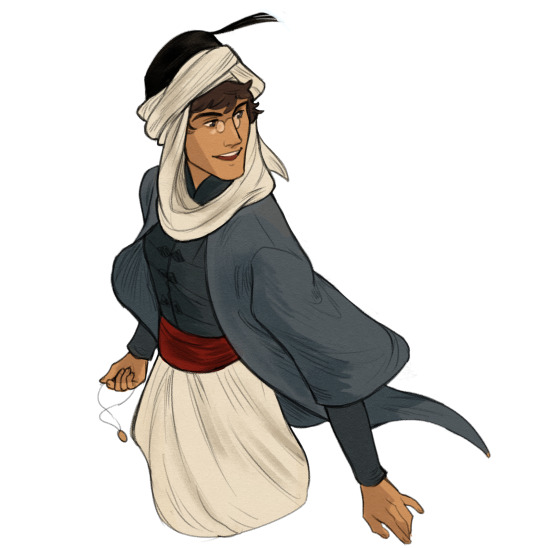

getting to know my oc, kaya (intimately)! he's a cunning ottoman thief who avoids all responsibility
#of course he has a homoerotic downfall. all my ocs do#my art#original character#my fantasy ottoman empire. he lives in the 17th century#i was wondering if wearing a fez is too on the nose for him. but then i was like HE'S TURKISH!!!#OF COURSE HE NEEDS A FEZ!!!#THE BEST HAT EVER!!!
130 notes
·
View notes
Text

17th-century illustration with floor plan of the Blue Mosque by French explorer Guillaume-Joseph Grelot. The Blue Mosque, also known as the Sultan Ahmed Mosque, is an important imperial house of prayer in Istanbul built during the early 17th century by sultan Ahmed I. The layout is classical Ottoman: one central dome surrounded by four semi-domes. It also has a large courtyard flanked by four minarets with a further set of minarets beside the building itself. The name "Blue Mosque" comes from its interior which is decorated with many Iznik tiles with floral motives. Sultan Ahmed was buried here after his death in 1617. The külliye (religious complex) also includes a madrasa. It is located in front of the Hagia Sophia, and is today a famous part of the iconic skyline of Istanbul.
#ottoman#ottoman empire#ottoman history#islamic history#islamic art#istanbul#turkish#turkey#turkish culture
27 notes
·
View notes
Text

The Battle of Zenta 1697 by Karl von Blaas
#karl von blaas#art#battle of zenta#habsburg monarchy#ottoman empire#holy roman empire#eugene of savoy#prince eugene#mustafa ii#europe#european#history#great turkish war#hungary#holy league#turkish#austrian#habsburg#senta#zenta#austria#ottomans#ottoman#turks#christian#muslim#christianity#islam#prince eugene of savoy#serbia
43 notes
·
View notes
Text


Model 1861 Breech Loading Converted Springfield Rifle from the United States of America dated to the 19th Century on display at the Black Watch Castle and Museum in Perth, Scotland
This rifle was captured from the Arab Auxiliary Force by the 2nd Battalion The Black Watch at Sanai in Mesopotamia, 1917. The rifle is a breech-loading Springfield Model 1861. This type of rifle was used by the US Army during the American Civil War, 1861 - 1865. Large quantities of these surplus rifles were sold to the Ottoman Empire in 1869 and were still in use by auxiliary units during the First World War.
Photographs taken by myself 2024
#military history#ottoman empire#turkish#turkey#20th century#first world war#black watch castle and museum#perth#barbucomedie
52 notes
·
View notes
Text

A Scene from the Balkan War (1914)
Balkan Wars, (1912–13), two successive military conflicts that deprived the Ottoman Empire of all its remaining territory in Europe except part of Thrace and the city of Adrianople (Edirne). The second conflict erupted when the Balkan allies Serbia, Greece, and Bulgaria quarreled over the partitioning of their conquests. The result was a resumption of hostilities in 1913 between Bulgaria on the one hand and Serbia and Greece, which were joined by Romania, on the other.
By Jaroslav Věšín (Czech, 1860 - 1915)
#first Balkan war#history#military art#military#1900s#early 1900s#soldier#the Balkans#Bulgarian history#Serbian history#Greek history#Turkish history#Ottoman Empire#Romanian history#pre-WW1
16 notes
·
View notes
Text

Portrait of Sultan Ahmet I (1603-1617) after a Painting by Konstantin Kapıdağlı, Above a View of the Hippodrome and the "Blue Mosque" in Istanbul. Türkiye, 1805 CE.
Los Angeles County Museum of Art.
#Los Angeles county museum of art#turkiye#turkey#turkic#Turkish#art#culture#history#modern history#1800s#turkish history#ottoman empire#ottoman#painting#Ahmet I#Istanbul
33 notes
·
View notes
Text
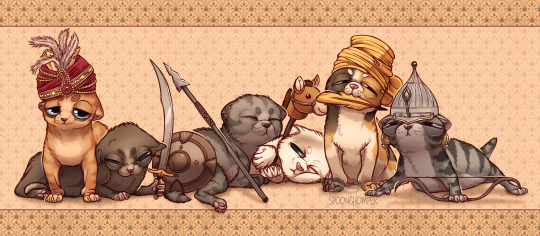
Yaqub Qamar Ad-din Dibiazah, Khalid Kashmiri, Khidir Karawita, Ismail Ahmad Khanabawi, Usman Abdul Jalil Shisha, Muhammad Sumbul
They are the Ottoman Empire's eepiest soldiers. They will conquer the world...after a quick nap.
#muhammad sumbul#kitty#cat#art#digital#MegafunkStuff#cats#cute#adorable#eepy#sleepy#ottoman empire#turkish#meme#silly#furry art#so many kitties#ottoman#artist on tumblr#illustration
193 notes
·
View notes
Text

Emerie Şafak, Lady of the Hills, the Cloaked, the Shimmering, the Carynthian
#obviously i made all of those up aside from ‘carynthian’#i imagine her as part turkish part arab and part javanese#i imagine the night court as being the ottoman empire and a mix of the different ethnic groups within#the illyrians are not one specific ethnic group but more of a social/occupational class#and javanese is bc thats what i imagine the dawn court as and i imagine her mom being from there#she left behind her father’s surname after leaving illyria and took a new one - safak means dawn in turkish#honoring both her night court and dawn court heritages#also… her father’s name is canonically proteus… does that mean something? can she change forms? is she connected to the sea? we shall see#emerie and gwyn love swimming together im calling it now :) nesta is more of a beach read girl#emerie#emerie of illyria#emorie#morrigan#valkyries#nesta archeron#gwyn berdara#nessian#gwynriel#elucien#acotar#sjm#acosf#acofas#illyria
39 notes
·
View notes